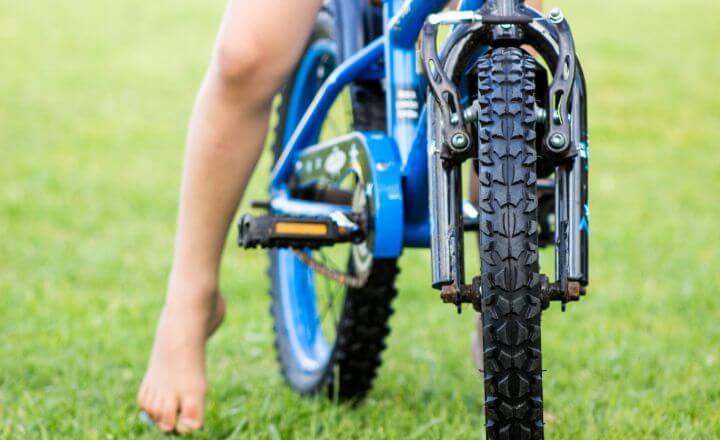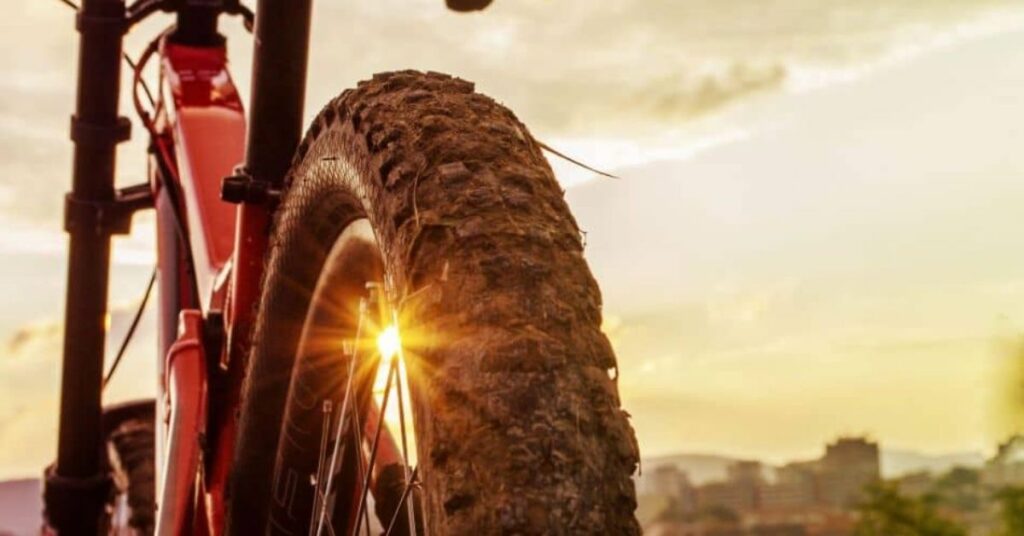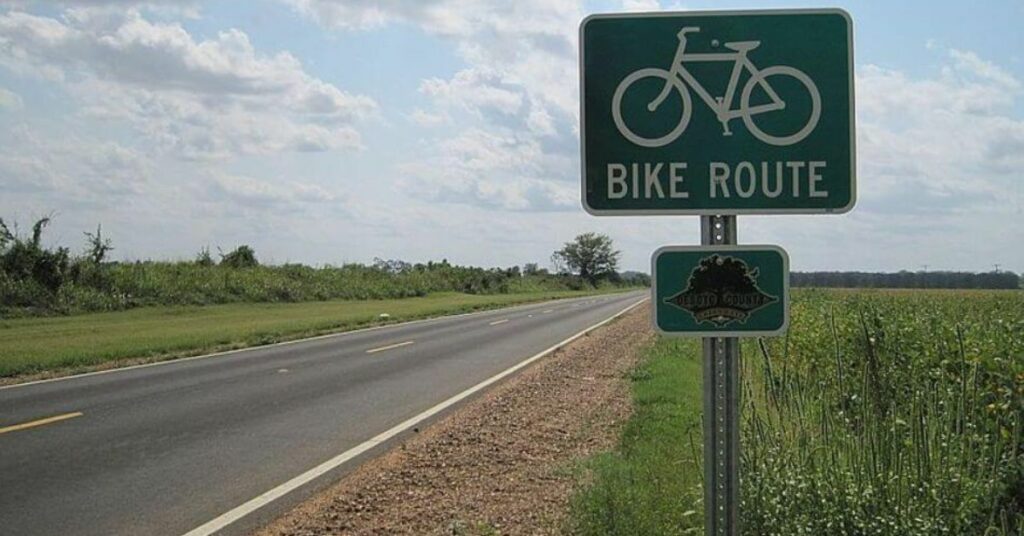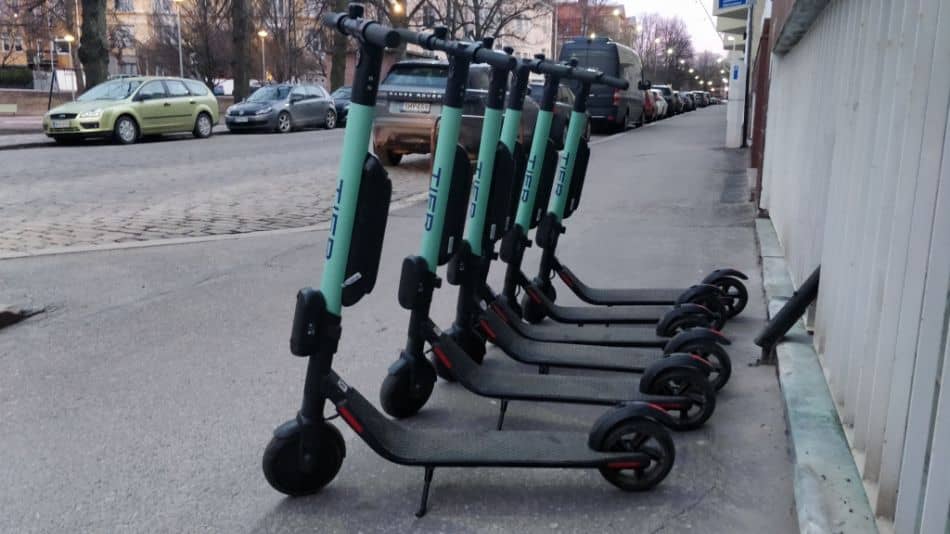(Last updated on April 14th, 2023)
Removing bicycle cranks can seem daunting, but it’s a straightforward process with the right tools and knowledge. Whether you’re looking to repair worn-out components or upgrade your crankset, knowing how to remove a crankset is a skill that’s sure to come in handy.

In this article, I’ll walk you through the steps required to remove a crankset, including the different types of common cranksets and the tools you’ll need. Following these steps, you can confidently remove your bike’s crankset and keep those pedals turning smoothly.
Types of Cranksets
With so many different bike brands and manufacturers out there, various crankset styles and specific components are available. I’d need to publish an entire book to cover the maintenance instructions for every type of bicycle crankset so that this article will explain the removal process of two of the most common cranksets.

Square-taper compressed spindle:
This traditional crankset comprises three pieces: the bottom bracket spindle, non-drive-side crank arm, and drive-side crank arm with chainring(s). The crank arms have a square- or diamond-shaped opening that slots onto the spindle end, secured by a crank bolt. The tapered end of the spindle wedges the crank arm onto the spindle for a secure connection but requires a crank puller for removal.

Modern 2-piece crankset:
Two-piece cranksets are the industry standard these days and include the non-drive-side crank arm and the spindle integrated into the drive-side crank arm. The simple two-piece system is stiffer than the square-taper crankset and easier to maintain with the correct tools. Instead of crank bolts that need to be pulled out, this crankset uses pinch bolts and a pre-load cap.
Electric bikes with a mid-drive motor have a much more complicated bottom bracket area, so bringing them into your local shop is probably best. For riders interested in retrofitting their bike with a motor, check out electric bike kits and the best ebike conversion kits.
When Do I Need to Remove Bicycle Cranks?
Removing a bicycle crankset may be necessary in various situations to ensure your bike is in proper working order.
Bottom Bracket Repairs
If your crankset or bottom bracket needs repair or maintenance, you may need to remove the crankset to access the components. For example, if your bottom bracket is making noise or not turning smoothly, you may need to remove the crankset to replace the bearings and gain access to the bottom bracket.

To complete other common repairs, read our helpful guides on how to change a bike tire and remove bike pedals.
Upgrading or Replacing Components
Riders who want to upgrade their crankset or replace a worn-out component must remove the crankset to access the parts. For example, if you want to switch from a triple to a double chainring setup, remove the old chainrings and spiders before installing the new ones.
Regreasing and Inspection
If you want to clean your bike thoroughly, you may need to remove crankset parts to access hard-to-reach areas. You may also want to inspect the components for wear or damage while removing the crankset. Remember to apply the appropriate grease when reinstalling the crankset parts liberally.
For mountain bikers, check out Global Mountain Bike Network’s (GMBN) video about removing and reinstalling mountain bike cranks. Seeing the process from start to finish and the reinstallation steps offers a great understanding of the repair.
Required Tools
Removing a bicycle crankset is one of the more complicated repairs a mechanic can complete. The necessary tools will vary depending on your bike’s design, and a few specialized tools are required to do the job. Remember that these tools are involved in crankset removal, but only some are needed for certain cranksets. Here is a general list of the tools you may need:

Crank Puller Tool
The main tool required to remove the crank arms from the bottom bracket spindle. Some crank puller tools may require an additional wrench to hold the tool while turning the handle.
Bottom Bracket Tool
This tool removes the bottom bracket from the frame, allowing you to access the bottom bracket spindle. On the opposite of this tool, a small wheel allows you to remove the pre-load cap on modern two-piece cranksets.
14mm Socket Wrench
If you have a square-taper crankset, you’ll need a special 14mm bicycle socket wrench to remove the crank bolts. This bike-specific tool slots into the space between the crank arm body and bolt.
8mm and 5mm Allen Keys
Many cranksets use an 8mm hex bolt to secure the crank arm to the spindle. Instead of a 14mm socket wrench, you’ll need an 8mm hex wrench to remove that bolt and 5mm key to remove pinch bolts.
Optional Tools
Torque Wrench
Depending on your bike’s manufacturer’s specifications, a torque wrench may be necessary to tighten the crank bolts when re-installing the crankset properly.
Flashlight
Inspecting parts threads with an additional light can help you see what you’re doing. Check out the best bike lights, which can double as a workshop flashlight!
It’s important to note that different cranksets and bottom brackets may require additional or different tools. It’s best to refer to the manufacturer’s instructions or consult with a bike mechanic if you need clarification on the tools needed for your specific bike.
Removing a Square Taper Crankset: Step-by-Step Guide
The process of removing a bicycle crankset can vary slightly depending on the type of crankset and the tools you have available. However, the basic steps are as follows:
Before You Start
It’s best practice to shift the chain to the smallest chainring and rear cog to relieve tension. Ensure the area you are working on is free of dirt or grime so you won’t get your hands dirty unnecessarily and can better see the individual parts. Remember that a clean bike is a happy bike!
1. Remove the Crank Bolts

The first step is to remove the crank bolt that attached the crank arm to the bottom bracket spindle. If there is a dust cap over the crank bolt, make sure to remove that first. Depending on your bike, these bolts will either be crank bolts with a 14mm socket size or bolts with an 8mm hex wrench size.
A normal 8mm hex wrench will do the job, but you’ll need a bike-specific 14mm socket wrench to remove the crank bolt. The crank bolt is recessed into the arm, and there’s very little room around the bolt, so the tool’s socket wall needs to be thin enough to slide into place.
2. Use a Crank Puller
Now it’s time to use a crank puller tool to remove the crank arms from the bottom bracket spindle. This type of crank is called a slotted compression crank because they are forced against the spindle’s slight taper via the crank bolt, ensuring a tight fit that won’t go loose while pedaling. However, it’s nearly impossible to remove the crank arms by hand.
Thread in the crank puller carefully— first by hand— ensuring the threads engage and match correctly. The threads inside the crank arm are notoriously thin and malleable, which makes them extremely easy to strip. To help you along, wipe down the crank puller and crank arm threads with a rag to remove any grime that may get in the way.
Continue inserting the crank puller with a large wrench until several rows of threads are inside the crank arm. This way, the crank puller has enough material to pull on safely without slipping out and stripping the threads. Now, turn the inside part of the crank puller, which pushes against the spindle and extracts the crank arm.
3. Remove the Crank Arm
You may need to apply a significant amount of force and complete several turns, but once you feel the force let up, the crank arm can be removed from the spindle. Then use a large wrench to remove the crank puller from the crank arm and repeat the other side crank process.
If you think the crank arm is stuck, don’t worry. Metal seizing is common, especially among older bikes with worn-out grease or serious wear. Watch this video to learn how to remove a stuck crank arm.
Note: How to Take Off a Bike Crank Without a Puller
Removing this type of crankset without a crank puller tool is not recommended. Attempting to force the crank arm off the spindle with an inappropriate tool, such as a hammer or a mallet, will likely damage the crankset or chainrings. Crank pullers are one of the cheaper specialized bike tools, so it’s worth investing in one, or you can always bring your bike to your local shop for professional assistance.
4. Check for Wear or Damage
The steps after removing the crankset depend on your reason for taking off the cranks in the first place. Bottom bracket replacement? Loose cranks? Crankset overhaul? Regardless of the following repair, it’s important to check the crankset and surrounding area for signs of wear or damage.
Cranks aren’t removed frequently, so this is a great opportunity to inspect the places normally hidden by these parts. Ensure the spindle maintains a proper square taper and that no threads are stripped inside the spindle or the crank arm. Give things a clean with a degreaser, and then liberally apply new grease to avoid metal seizing so the next crank removal goes as smoothly as possible.
Removing a Modern 2-Piece Crankset: Tips and Tricks
Two-piece cranksets have become the modern standard on most new bikes and differ from the older square-taper cranks explained above. The general logic is the same, but here are the specific steps to remove a 2-piece crankset:
The bike experts at REI have provided an excellent video that walks you through the steps of how to replace a 2-piece crankset— check out the helpful video to see the procedure in action.
Before You Begin
As mentioned before, it’s a good idea to relieve chain tension on the chainrings and drivetrain before you get going. Modern bikes typically have a bearing cap between the inside of the crankset and the frame— you can gently lift the chain off the chainring and rest it on that bearing cap while you work.
1. Loosen the Pinch Bolts

Unlike older crank arms, modern models have additional pinch bolts on the non-drive-side crank arm. These bolts secure the arm to the spindle integrated into the drive-side crank. Loosen the pinch bolts, but don’t remove them completely.
2. Remove the Pre-Load Cap

This type of crankset uses a plastic pre-load cap that sits inside the crank arm. Combined with the pinch bolt, this dual system ensures a tight connection with the spindle. Instead of a crank puller, you’ll need to use a bottom bracket tool specifically designed to remove pre-load caps.
The tool is typically double-sided, with one end being the bottom bracket removal tool and the other being this smaller wheel used for pre-load caps. That said, some bike manufacturers don’t have a cap at all, so it’s worth checking out the needs of your specific bike and crankset.
3. Slide the Spindle Out
When the cap is removed (and pinch bolts sufficiently loosened), you can remove the left crank arm from the spindle. Now, you can remove the drive-side crank with the spindle attached. It could slide out easily or may require some encouragement, so you can gently tap the spindle end with a rubber mallet to help it along.
As with the other type of crankset, take this moment to inspect the crankset and bottom bracket for any damage. When you complete the steps in reverse for installation, apply plenty of grease to parts where metal contacts metal, including bolt threads and the spindle’s length.
Final Thoughts
Removing a bicycle crankset is relatively straightforward, but having the right tools and following the correct steps is important. Following the steps outlined in this article, you should be able to remove your crankset without damaging your bike or its components. However, if you need clarification on any steps or feel uncomfortable performing the repair, it’s always best to consult a bike mechanic at your local shop.
If you liked this article, check out:
- How To Repair A Bike Yourself: A Step-By-Step Guide
- How To Change A Bike Tire? (Step-By-Step W/ Pictures)
- 13 Best Bike Brands In The World: What’s Your Pick? (2023)
Frequently Asked Questions
You’ll need a crank puller tool to remove a crankset from a bike. First, remove the crank bolt from the crank arm. Next, screw the crank puller tool into the arm, ensuring it’s threaded securely. Then, use a wrench to turn the tool counterclockwise until the crank arm comes loose from the bottom bracket spindle.
Removing a crank off a bike without a crank puller is not recommended, as it can damage either the bottom bracket or the crank arm. Using a crank puller tool is the safest and most effective way to remove a crank.
Changing the crankset on a bike can be a moderately difficult task, especially if you are unfamiliar with bicycle maintenance. It requires some specialized tools and knowledge of properly installing the new crankset.
To remove a crankset, you’ll need a crank puller tool, which is a specialized tool that threads into the crank arm and pulls it off the bottom bracket spindle.
No, not all cranks fit all bikes. The type and size of crankset you need will depend on the type of bike you have and the bottom bracket standard it uses.
Yes, the left-side crank arm on a bike is typically reverse threaded, meaning you need to turn it clockwise to loosen it. This is to prevent it from loosening while you pedal. The right-side crank arm is threaded normally, so turn it counterclockwise to loosen it.
Have more questions about removing a bicycle’s crankset? Chat with us!

Jeffrey Brown is a writer, editor, and professional bike mechanic with over 7 years of experience working in full-service and community-based bike shops. As a bicycle educator, he has supported youth programs across the US that teach bike mechanics and life skills to prepare the next generation of cyclists.
Jeffrey began his professional mechanic career at his university bike co-op, so he recognizes the grassroots power of the cycling community. Initially self-trained as a mechanic, his subsequent positions as manager and lead educator gave him official training. He has won various awards and grants for his role as a bicycle and environmental advocate.




